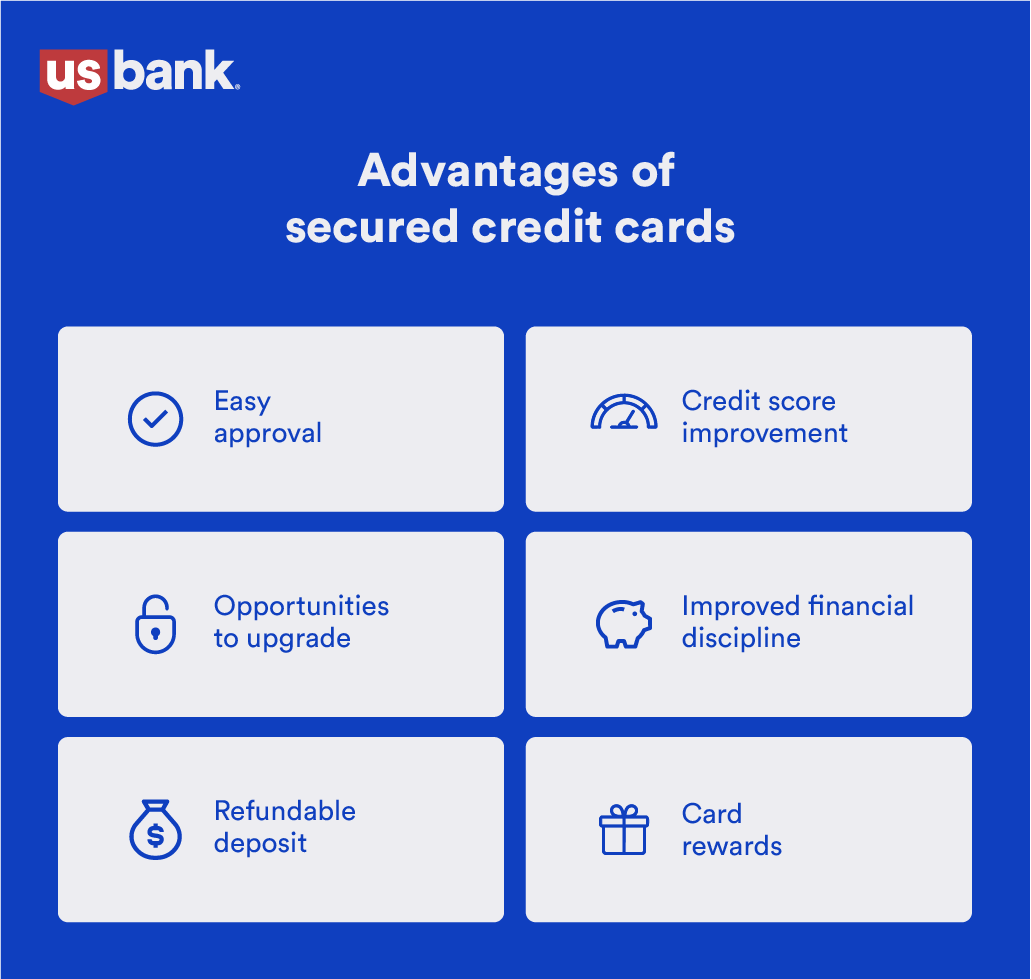
How many credit cards should I have?
4 min read

What are 0% intro APR credit cards?
7 min read

What are the different types of credit cards?
7 min read
Credit Card Basics
Secured credit cards allow you to open a line of credit by paying a refundable cash deposit. People working to build (or rebuild) their credit usually find it easier to qualify for secured cards and can typically use it to help boost their credit score.
Whether you’re paying down past credit card debt or just beginning your credit journey, it’s never too late to start making smarter financial moves. A secured credit card could be the right tool to help you take that first step. But before you apply, you’ll want to know more about secured cards and how they differ from traditional cards to decide if it fits your financial goals.
A secured credit card is a card designed to help you improve your credit score. Secured cards are different from traditional credit cards because you’ll provide a refundable security deposit from $300 to $5,000 to set your credit limit.
A secured credit card works like a traditional credit card. You get access to a credit line that you can typically use for everyday expenses, like groceries, gas, or your morning “pick me up,” and repay before the due date. The only difference is you provide a refundable cash deposit.
Most card providers require a cash deposit so they can take on less risk when opening a secured credit card account. The deposit ensures that your balance is paid if you default on your payments.
The amount of credit available depends on the amount of cash you deposit. For example, if you deposit $300 when you open the account, your credit limit is usually $300. You can typically increase your available credit by depositing more money.
If you apply for a card, like the U.S. Bank Secured Visa® Credit Card, your refundable deposit is held in a secure savings account until you’re eligible to upgrade to an unsecured card or close your account.
Responsible credit habits could help you build credit with your secured card over time. Most card providers report your payment history to some (or all) of the three major credit bureaus (Experian, Equifax, and Transunion). If you consistently pay your card bill on time each month, you may start to see a boost in your score.
You’ll also notice that the balance you keep on your card could affect your credit score. It’s a good idea to keep your card balance low each month and only use what you can afford to pay off. If you max out your card, it could become hard to pay the balance down. If you miss a payment or pay late, your credit score might decrease over time.
Many card providers will check your account regularly to see if your credit has improved, and you may qualify to upgrade to a traditional credit card. You’ll receive your deposit once your secured card transitions to an unsecured one.
The biggest difference between a secured and unsecured credit card is the cash deposit. An unsecured credit card doesn’t require a deposit. An unsecured credit card could be harder to qualify for because eligibility typically depends on your credit score and history. Unsecured credit cards may also have lower interest rates.
People often consider secured credit cards if they have limited credit histories or have experienced some financial hurdles. For example, a secured card may be right for you if:

A secured credit card can be a powerful tool for building or rebuilding credit. Whether you’re starting from scratch or recovering from past financial bumps in the road, it offers a low-risk way to establish heathy credit habits. Here are some of the key advantages to keep in mind:
Applying for a secured credit card is simple. You can usually get it done in four easy steps.
Search the internet to compare secured credit card options to find the best fit for you. You might want to think about the following:
Looking at this information side by side can help you decide between cards like the U.S. Bank Altitude® Go Secured Visa® Card or the U.S. Bank Cash +® Secured Visa® Card, for example.
When you've decided on a card, you can typically go to the provider’s website to apply. The process takes just a few minutes, and you can often get a response just seconds after you submit your application.
Most applications ask for your:
If approved, you’ll need to pay the refundable cash deposit. Depending on the card provider, that may mean sending money via electronic transfer, personal check or money order.
Your secured credit card usually arrives by mail within a few days of making the deposit. Once you have your card in hand, you’re all set to use it for everyday expenses.
Whether you're starting fresh or working to rebuild your credit brick by brick, a secured card gives you a chance to prove your creditworthiness while learning good financial habits.
If you think a secured card might be right for you, take the next step: Explore your options, and choose a card that fits your goals. You can turn a small deposit into a stronger credit future with a little planning and discipline.
Table of Contents

4 min read

7 min read

7 min read